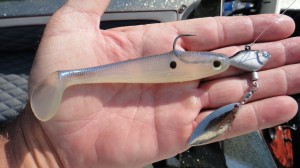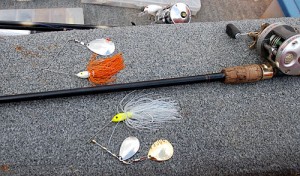By Chris Erwin
If you want to become a better fisherman learning fish movements is imperative, as the fishing season has progressed, we have tried to address each major movement and what you can do to help improve your success.
Before we get into the movements of fall, we should define a few terms so you understand what we are referring to. Our first term is Plankton, the best way I can describe plankton is its a free-floating organisms that is drawn to oxygen-rich areas. This Plankton is the main food source of shad.
Our next term is “Lake Turn Over” this is something that you hear about every fall. It’s a good thing to understand since its plays a big part in the last stage of Fall pattern fishing.

So what is Lake Turn Over? When the surface-water temperature falls to the 50 degree area, some basic science begins to happen, the water molecules become dense and oxygen rich. The surface water begins to sink into and through the thermocline, forcing warmer and less dense water to the surface, eventually erasing the temperature stratification built up over the summer. At some point, the majority of the water in the lake reaches an approximately uniform temperature. Now, storms and sustained high winds can begin to perform the task of overturning and mixing all the water in the lake referred to as fall lake turnover.
Now that we have that out of the way let’s back up a little and talk about the Fall Transition this can be one of the most productive times of the year. However, as the fall begins they are a few weeks where the fish will be scattered and can frustrate some anglers into putting up their gear but trust me this is not the time to give up, if you learn these fall patterns, you can catch more fish in a few hours than you caught in days during the summer.
One of the things to remember is the bass follow the shad, and the shad follow the plankton. They are some signs that help you to know what stage the fish are in, early fall, mid fall or late fall patterns.
Early fall is the most perplexing at times the shad are just starting to move up in the water table.

They are found in schools usually in the channel or in the mouth of large creeks, sometimes they will be around weed bed edges. This is a good time to use fast moving baits like spinner-baits, lipless crankbaits that cover a lot of water, while feeding can be a hit-or-miss thing, the payoff can be huge.
As fall moves along the shad will usually start to move up the creeks, while most of the same baits will work the main goal is to stay on the shad movements, feeding periods can start at the drop of a hat and be fast a furious for short periods, watch for breaking fish feeding on the surface.
The water will continue to cool, and as it does the shad will move deeper and deeper into the coves and Creek heads.
Once the water temperature falls into the low 50s or mid 40s the shad will go deeper and so will the fish, this is usually November or early December depending on the weather. At this time, fish are hard to catch, its back to hair jigs and dead sticking to catch fish. We are just starting into the early fall pattern, and the fishing can be a little tough at times. However, learning shad movements can produce the biggest fish of the year. Chris Erwin is the founder and publisher of Kentucky Angling News an on-line magazine available at www.kentuckyangling.com/magazine Chris can be reached by email chris@ashlandbeacon.com


Be the first to comment